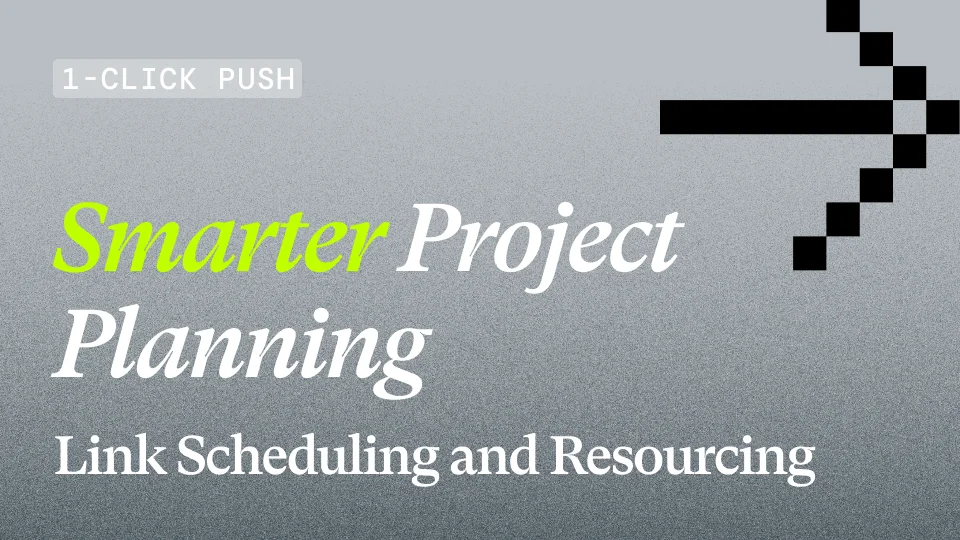Grow Faster: 3 Metrics To Track With Resource Management Software
.webp)
Leading a consulting firm can feel less like a job, and more like walking a tightrope - just when you’ve found the perfect balance between people, projects and profits, something shifts, and the resource management planning juggle starts again.
This article focuses on the three metrics that help you find the balance, and hold it. They help you staff with confidence, price with discipline, and see trouble early enough to act. Consider this your guide to building a project and resource management approach that keeps your people engaged, your clients happy, and your margins healthy.
1) Margins: Treat It Like A Stack
You can think of margins as a stack. Start with account margin at the top, typically 35 to 45 percent. Subtract the cost of billable people who are on the bench or doing non-billable work to get gross margin. Aim for 30 percent gross margin. Then take out about 10 percent for sales and marketing and 10 percent for admin. You are left with 10 percent profit. Drive admin down to 7 to 8 percent to free up options. To lift the bottom line further, grow account margins beyond 45 percent.
A quick caution: profit is critical, but excessive profits can signal underinvestment in future growth. Do not be greedy. Reinvest where it counts, especially in smarter resourcing capability that reduces leakage and unplanned bench time.
Pro Tips:
- Use resource management software like Projectworks to instantly see who’s fully booked or on the bench.
- Standardize pricing and discount guardrails inside your project planning tool so account margins don’t erode during scoping.
- Make sure your resource management planning tracks admin hours and automate routine reporting to keep overhead within that 7 to 8 percent band.
- Ensure you’ve got accurate reporting on margins, as well as the other consulting metrics that matter. Without it, you’re flying blind on your firm’s profitability.
2) Utilization: Set Yours Strategically
Utilization is the ratio of billable to non-billable hours, and the right target depends on your market position. Whatever you do, avoid the middle - sure, you’ll be hitting 95 percent utilization but only because your hourly rate is low. That’s no man’s land: you’re not as cheap as offshore, yet too commoditized to command a premium.
The lesson: optimize utilization for your business model, not someone else’s benchmark. Maintain a healthy bench with the skills to start work immediately, especially as you add new practices. As your offering widens, the absolute number of people on the bench may need to grow to ensure coverage.
Pro Tips:
- Treat internal initiatives as first-class projects inside your project and resource management system so non-billable time is planned, not “lost.”
- Improve day-to-day project resource management by matching people to work weeks in advance, not days, so you’re not having to staff projects at the last minute with expensive contractors.
- Use a live resource planning tool to forecast demand by skill and seniority, identifying the gaps currently filled with placeholder resource in enough time to hire for them.
3) Revenue Confidence: Track Your Known Unknowns
Revenue confidence is the ratio of known to unknown revenue. Investment bankers visualize it with a simple waterfall: work already delivered, work sold but not yet delivered, and work still to be sold to hit target. Measure the percent that is unknown versus total. The later in the year and the closer you are to target, the more this ratio matters.
One of the hardest consulting problems is knowing when to hire, especially as your firm scales. Aim for 70 percent revenue confidence early in the year, then climb above 90 percent shortly after the end of Q2, and making hiring calls based off that.
Pro Tips:
- Connect pipeline to delivery in your resource management planning workflow so signed deals automatically shape hiring plans.
- Find a resource management software everyone can trust as your firm’s single source of truth - live connected time tracking is the key here.
- Roll up a weekly revenue confidence scorecard from your project and resource management platform and review it in every leadership meeting.
Bringing It Together With Smarter Project And Resource Management
The firms that outperform at these three metrics tend to use connected resource management software rather than spreadsheets and gut feel. They forecast demand, rightsize the bench, and make hiring decisions with confidence. They tighten the margin stack by planning ahead and eliminating leakage.
If you take just one step this quarter, make it this one: implement or upgrade your resource planning tool, and link it to your CRM and finance systems. Then make it a weekly habit to review utilization, revenue confidence, and book to bill from the same source of truth.
At Projectworks we have the privilege of seeing into the inner workings of hundreds of consultancies. Book a demo to see the impact our software could have on your firm.
Related Articles

10 Field-Tested Utilization Fixes from Leaders Who’ve Lived It
Most firms treat utilization like a thermostat. Too cold, crank it up. Too hot, hope nobody burns out. The reality is messier. Hours leak in the handoffs, decisions drift, heroes hoard the hard work, and a quiet three-week gap nukes a quarter.

